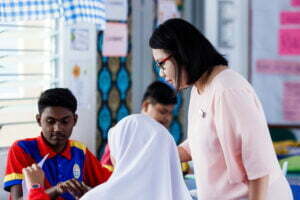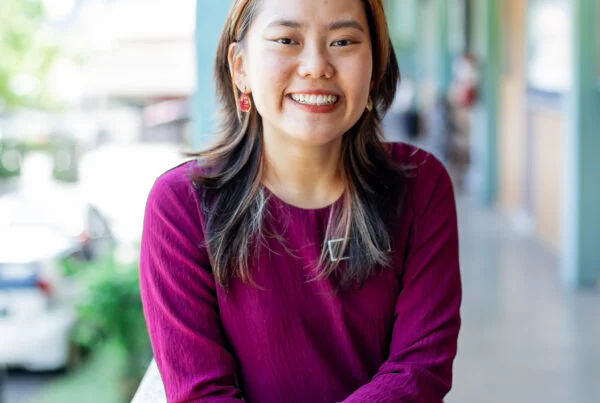I am a 2018 Alumna who taught in Semporna, Sabah and is currently teaching in one of the Chinese Independent School (CIS) in Miri, Sarawak. Apart from teaching English in CIS, I also teach IGCSE Biology part-time in an international school in Miri. My understanding of education inequity has grown so much from the moment I stepped into the Pre-Service Programme to the end of my Fellowship, and even now, post Fellowship. The bitter sweet experience has shaped me into who I am today and has made me a more resilient and resourceful teacher.
Education inequity is a multifaceted issue. One may experience different “faces” and forms of it, in different settings. For me, it is in the form of the difference in the school facilities in rural and urban schools. I can say that I am privileged to have experienced both spectrums because I served in a school with severe lack of proper facilities (in Semporna) and now in a private urban school.
Back then in Semporna, among the common sights that I often saw (and not limited to) were the lack of tables and chairs. There were times when students needed to sit on the floor or on “makeshift” tables and chairs. I remembered that there were few classes without a single working fan. It got me thinking: how are these students supposed to learn when their environment is not comfortable at all? So, I tried to crowdfund from random friends and family members to transform my classroom into a more conducive place for the students by buying some makeshift tables, standing fans and repainting the classroom. Students finally got the basic classroom facility that they deserved.
On the other hand, while my current school is very diverse in terms of its students’ population and background, the facilities here are of another world compared to the schools in the rural area. Students here come to school and sit in an air-conditioned classroom with interactive boards and internet connection, wide choices of canteen food and various well-equipped rooms like STEM and Robotics room with 3D printers.
In terms of support for teachers, there is definitely a clear difference. I no longer have to fork out a large portion of my own salary for printing and photocopying exercises for students. Many may say that private schools are the school for the rich, but what many might not know is that some of these schools (my school included), offer partial and full scholarships for needy students with good academic and co-curricular achievements. One of the initiatives by Sarawak Dong Zong is providing full scholarships for Bumiputera students to study in CIS for 6 years.
Four years down the road, I think that my experience as a Fellow during the TFM Fellowship was the start of a chain reaction. It was the beginning of my life as an educator. It has taught me, not only to be a better teacher for my students, but has also shaped my understanding of education inequity and the importance of community.
Although I am teaching in a school with much better facilities now, the challenge and mission remain the same: to help students to realise and achieve their full potential.

My Fellowship experience was also the cultivating ground for my interest in advocating for health and well being, as well as student leadership for social change. My second-year Fellowship initiative: the establishment of Bilik Kesihatan and the teams that I brought for Accenture Student Leadership Camp (SLC) were just the starting point. Continuing my interest in social issues and change, I am currently leading a team of teachers in my school that pioneered the integration and teaching of the 17 Sustainable Development Goals to students in my school.
The first step is always the most challenging one, but it is worth it because it is the start of greater things and impact. The TFM Fellowship has been a great first step and foundation of the work I am currently doing, and will be pursuing in the future.






